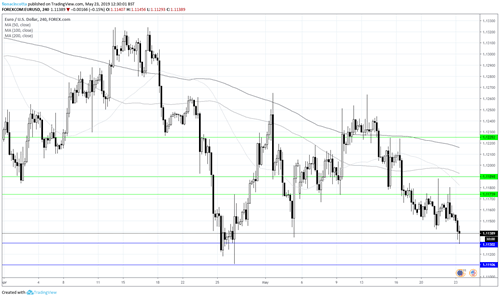Previously the turnout for these elections has been low. However, this year’s election could prove to be the most consequential in the bloc’s history, with a much higher turnout expected. As a result, the impact on the markets could be greater than in previous years.
Why?
Over the past few years nationalist Eurosceptic movement has been gathering pace across Europe, populist party supporters have swelled in number. Polls are indicating that Eurosceptic parties could seize up to a third of the seats up for grabs in the European Parliament. This would mean that Eurosceptics could hold sufficient power to not just slow down legislation but potentially block it altogether. The markets are most concerned about the largest economies in the eurozone Germany, France, Italy and Spain (not the UK as it is leaving and has the pound) and how they vote. Its only when we drill deeper into specific examples that the danger becomes apparent.
Case Study: Italy
One of the big concerns in Europe is Italy. Should populists gain more seats in the European parliament this could embolden Rome to push harder against European Commission's 2% limit on fiscal deficit. This could have negative consequences for the euro and could under mine stability in the sovereign debt market. In a worse case scenario this could start the ball rolling for eurozone debt crisis 2.0.
Trade idea:
It is always worth considering the euro relative to other currencies. The pound is under huge pressure as Theresa May clings to power by a thread. Should populist parties fail to gain a high number of seats (so euro positive) it could be worth buying the euro versus the pound. A strong showing for populism (euro negative) could send the pound lower so a sell on the EUR/USD could be in play.
EUR/USD
The euro is steady around $1.1150. On the four-hour chart it is trading below its 50, 100 and 200 sma indicating a negative bias. The RSI is also lower without entering oversold territory. This is a bearish chart.
Support can be seen at $1.135 and then again at $1.1110 before $1.1025. On the upside resistance is noted at $1.1170 and $1.1190 before $1.1225. A close above $1.1250 could indicate a change of trend.




